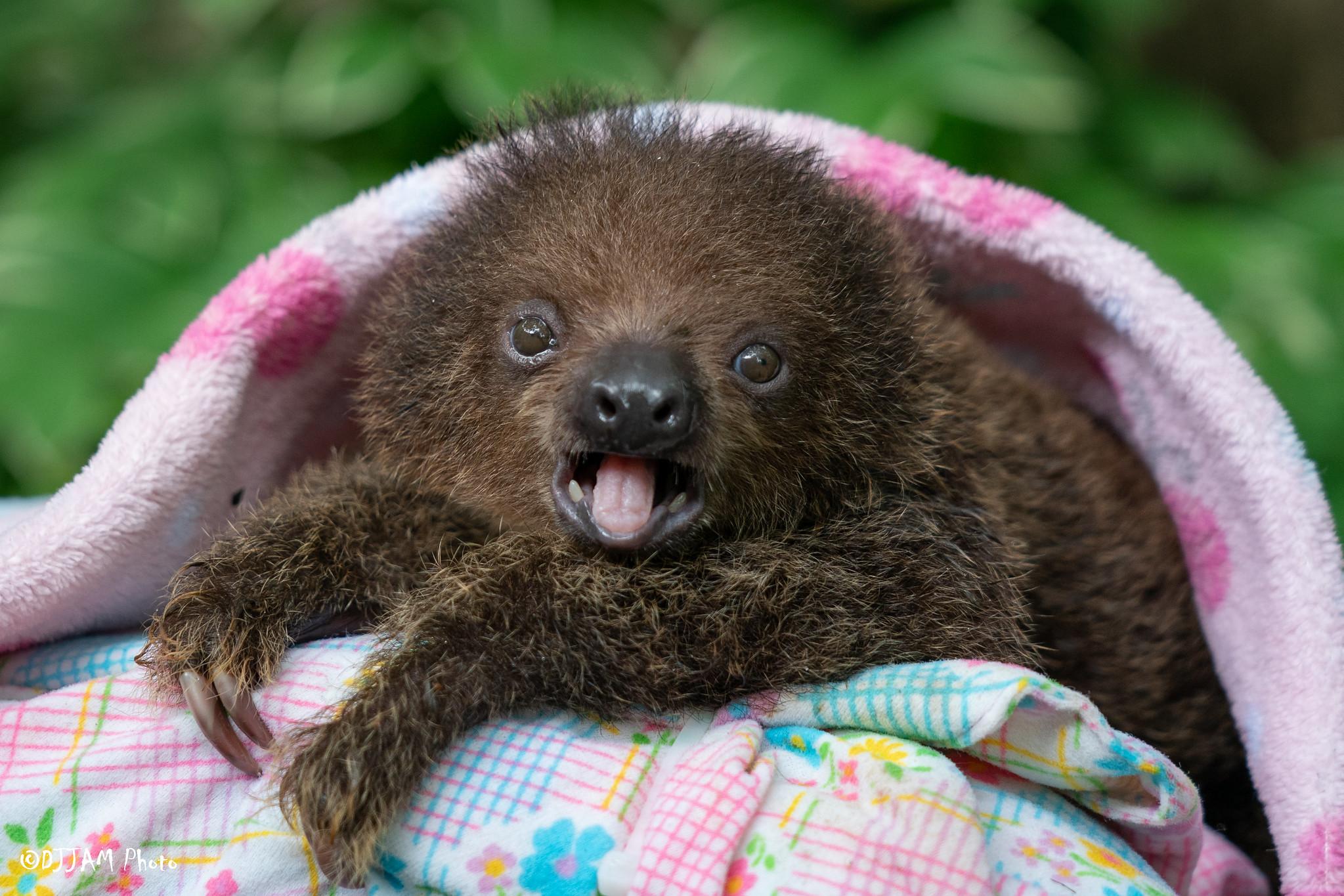
The Enchanting World of Baby Sloths: A Journey into the Realm of Cuteness and Conservation
In the heart of the lush rainforests of Central and South America, there exists a captivating creature that has stolen the hearts of animal lovers worldwide: the baby sloth. These adorable and enigmatic mammals, with their endearingly slow movements and irresistible charm, have become a symbol of tranquility and the beauty of the natural world.
The Birth of a Sloth
The arrival of a baby sloth is a momentous occasion within the sloth community. After a gestation period of approximately six months, a single baby, known as a "cub," is born. The newborn cub is tiny and helpless, weighing only around 10 ounces and measuring a mere 10 inches in length. Its fur is a soft, pale gray, and its eyes are large and dark, filled with a mixture of curiosity and vulnerability.
The Mother-Cub Bond
The bond between a mother sloth and her cub is incredibly strong. From the moment of birth, the cub clings tightly to its mother’s belly, where it will remain for the next several months. The mother sloth provides her cub with constant warmth, protection, and nourishment. She nurses her cub frequently, producing a rich milk that is essential for its growth and development.
The Cub’s Development
As the cub grows, it gradually becomes more independent. At around two weeks of age, it begins to explore its surroundings, cautiously venturing away from its mother’s side. By the time it is three months old, the cub is able to climb and hang from branches on its own.
The cub’s physical development is also remarkable. Its fur gradually darkens to a rich brown or black, and its claws become longer and stronger, enabling it to grip branches securely. Its eyes develop keen eyesight, allowing it to navigate the rainforest canopy with ease.
The Sloth’s Unique Adaptations
Baby sloths inherit a number of unique adaptations that have evolved over millions of years to suit their arboreal lifestyle. Their slow metabolism allows them to conserve energy, while their long, prehensile tails provide them with exceptional balance and agility in the trees.
Their fur, which is covered in microscopic grooves, acts as a natural camouflage, helping them blend seamlessly into the rainforest canopy. Additionally, sloths have a symbiotic relationship with algae that grows on their fur, providing them with additional nutrients and further enhancing their camouflage.
The Importance of Conservation
Baby sloths are not only adorable creatures but also play a vital role in the rainforest ecosystem. They are important seed dispersers, helping to maintain the health and diversity of the rainforest. However, these gentle creatures face numerous threats, including habitat loss, deforestation, and hunting.
Conservation efforts are crucial to ensure the survival of baby sloths and their rainforest homes. Protecting their habitats, reducing deforestation, and raising awareness about their importance are essential steps towards safeguarding these enchanting creatures for future generations.
The Role of Zoos and Sanctuaries
Zoos and sanctuaries play a significant role in the conservation of baby sloths. They provide a safe and nurturing environment for orphaned or injured sloths, allowing them to receive proper care and rehabilitation. Additionally, zoos and sanctuaries conduct research and educational programs to raise awareness about the importance of sloths and their conservation.
Conclusion
Baby sloths are a testament to the wonders of the natural world. Their endearing appearance, unique adaptations, and vital role in the rainforest ecosystem make them a species worthy of our admiration and protection. By understanding and appreciating these gentle creatures, we can help ensure their survival and the preservation of their rainforest homes for generations to come.
